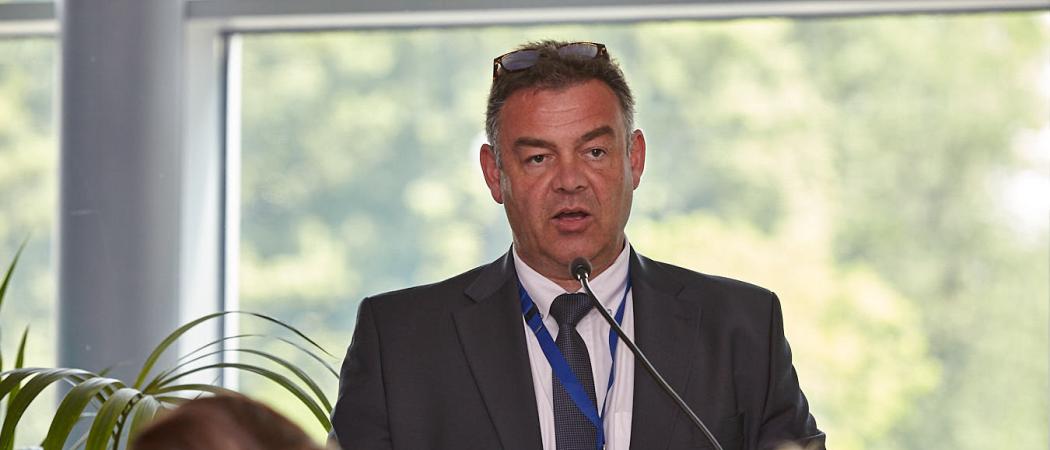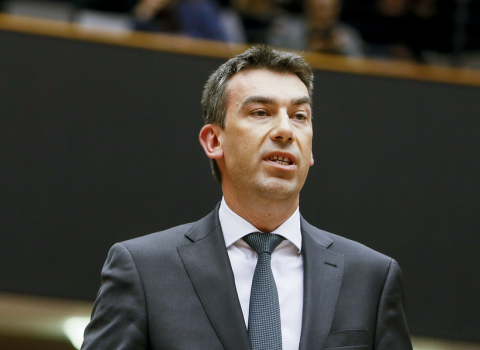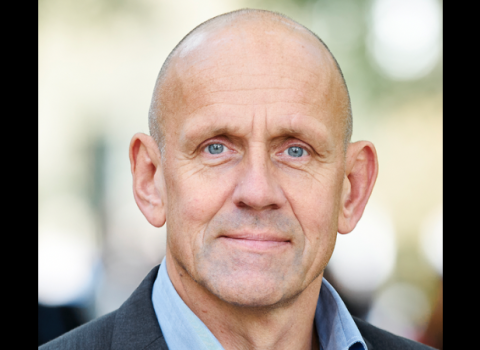There is horse trading ahead, but Bert De Colvenaer, head of the EU’s €5B electronics and systems partnership is pleased to see the successor project taking shape. Industry wants a bigger budget and for larger companies to continue to get public funding

Bert De Colvenaer. Photo: ECSEL
For more than 30 years, Europe has been trying to matter in global semiconductor markets. Would it surprise you to know that, with European Commission help, it’s trying again?
Among the list of suggested partnerships to be funded in the next EU research programme, Horizon Europe, is Key Digital Technologies, the successor to the current EU project in the field, Electronic Components and Systems for European Leadership (ECSEL), a €5 billion effort to revive Europe’s semiconductor industry.
The new partnership would have more or less the same remit as ECSEL, but with added emphasis on cybersecurity and technologies including artificial intelligence.
The suggestions for new public private partnerships are preliminary; they could change over the coming months and will require agreement among EU member states and the European Parliament to get through.
Nevertheless, Bert De Colvenaer, ECSEL’s executive director is pleased to see the new proposals shaping up. “I’m happy that it starts to materialise,” he said. After a slow start, “I think it’s good that we’re now starting to have more intensive discussions.”
The idea of European chip makers banding together for R&D help against Asian and American competitors is literally as old as EU research funding programmes: worried about the “technology gap” with the US, EU officials started funding electronic-component research, and in the mid-1980s European firms banded together with national government support to compete in memory chips. The results so far have been mixed: European manufacturers today have a modest 14 per cent of the global components market, but have strong positions in individual market niches.
Four years into the ECSEL partnership, there are signs of a competitive revival, with Germany’s Infineon Technologies announcing earlier this month that it is buying the US chip company Cypress Semiconductors for €9 billion, while in May the Dutch group NXP Semiconductors said was acquiring the WiFI business of Marvell Technology Group for €1.76 billion.
Made in Europe
ECSEL’s 2014 – 2024 budget of €5 billion makes it one of the largest of all the EU’s public private partnerships. Of this, €1.18 billion comes from the EU’s Horizon 2020 R&D programme, and a roughly similar amount from member states. The rest is in the form of in-kind contributions from industry.
The mission of ECSEL is to boost the competitiveness of the European electronics industry. In the years following the 2008 crash, Europe “lost the battle” with international competitors for leadership in the electronic components and systems (ECS) market, De Colvenaer told Science|Business. “At that time, when we had the dip in the economy, there was an urge to try to find mechanisms …. to build strong leadership in this technology, to avoid ‘Made in China,’ and to see how we can do this in Europe,” he said.
More recently, the impact of the US:China trade war on the tech sector has again highlighted the strategic importance of Europe being self-sufficient in microprocessor design, manufacturing and applications.
De Colvenaer says ECSEL’s work in supporting semiconductor fabrication plants – fabs – by providing funding for pilot lines and large scale demonstrators, has helped put Europe back at the forefront of chip manufacturing.
For example, ECSEL played a role in the development of manufacturing processes for Fully Depleted Silicon-on-Insulator chips, which optimise performance, reducing the power consumption of smartphones and tablets by 40 per cent.
“We have technology that is now in everybody’s telephone,” De Colvenaer said. Unfortunately, confidentiality agreements with smartphone manufacturers generally mean European chip makers can’t advertise what devices their products are inside.
“You could say 'Europe inside,' or you could say that ECSEL technology is inside,” said De Colvenaer.
A start-of-the-art fab costs billions, but ECSEL, along with industrial partners like CA Technologies and SOITEC, has invested in pilot lines and demonstrators, and licensed their semiconductor designs to firms such as GlobalFoundaries, STMicroelectronics, NXP and Samsung.
Integrating systems
Alongside advancing semiconductor design and manufacturing, ECSEL works on developing systems for applications in health, transport, energy and other sectors.
For example, the Aggregated Farming in the Cloud (Afarcloud) and Smart and Networking Robots in Cooperation Measures (Swarms) projects are developing systems for integrating robots, sensors, actuators, and autonomous vehicles in precision agriculture and construction and maintenance at sea, respectively.
The value of ECSEL is that it brings companies and academic researchers together, says José-Fernán Martínez Ortega, professor of robotics at the Polytechnic University of Madrid, who coordinates Afarcloud and Swarms. “What I like about ECSEL is that it allows you to do applied research,” he said.
However, the money is spread thinly. “I think it has very little resource for the quantity of projects,” Martínez said. “It could be interesting if the programme had more money.”
The need to develop a unified robotics platform for precision farming arises because of the many disparate technologies. “Many farms now have a lot of technology deployed; there are robotics systems that farmers already use,” said Martínez. These include drones, automated weeding machines, and sensors and actuators to monitor and manage crops, soil quality and animal health.
The challenge is to build a system that can make all these devices work together, allowing all aspects of a farm business to be seamlessly linked up. “The farmer [must be able] to configure his system without having to know anything about ICT – because a farmer is a farmer,” said Martínez.
Swarms, meanwhile, focuses on aquatic robots and drones for use in construction and maintenance at sea, such as on oil rigs and wind farms, with the aim of integrating the operation of different types of aquatic vehicles, so they work together efficiently.
“Because these vehicles are so expensive, we are going to assemble between them a mechanism that allows [each] one to adapt [its] functionalities to a really autonomous system,” said Martínez.
The three industry groups that are members of ECSEL claim the initiative has built an ecosystem of companies, universities and research institutes, which are working together in developing electronic components and applying them in healthcare, energy, transportation and industrial production.
They want the EU to widen the scope and budget of ECSEL under Horizon Europe, saying it should continue to provide public funding to large companies that underpin the global value chains, from which also many smaller firms benefit.



 A unique international forum for public research organisations and companies to connect their external engagement with strategic interests around their R&D system.
A unique international forum for public research organisations and companies to connect their external engagement with strategic interests around their R&D system.